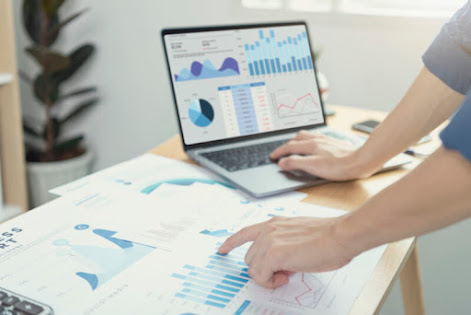A Comprehensive Guide to Document Management System for Accounting
Every business, especially those in the accounting industry, generates and deals with massive amounts of digital and paper-based documents. From invoices and receipts to contracts and financial reports, these documents are crucial for maintaining financial records, preparing taxes, and making informed decisions. However, managing these documents can be a daunting task, and without a proper system in place, businesses could face issues such as data loss, security breaches, and inefficient workflows. That's where document management systems (DMS) come in. In this comprehensive guide, we'll delve into everything you need to know about implementing a DMS for accounting.
What is a Document Management System?
A DMS is a software-based solution designed to help businesses streamline the creation, storage, retrieval, and distribution of documents. With a DMS, businesses can digitize all of their paper-based documents, such as invoices, receipts, and contracts, and manage all their digital documents from one central location. Some of the key features of a DMS for accounting include document capture, indexing, version control, collaboration, security, and audit trails.
Benefits of a Document Management System for Accounting
Implementing a DMS for accounting can bring numerous benefits to businesses, including:
Efficiency: With a DMS, businesses no longer have to waste time searching for documents across different folders or cabinets. All documents can be accessed quickly and easily with a few clicks, saving time and improving productivity.
Security: A DMS can enhance the security of documents by implementing access controls, encryption, and audit trails, ensuring that only authorized personnel can view or modify sensitive documents.
Collaboration: A DMS allows for seamless collaboration on documents, with features such as version control and commenting, making it easier for teams to work together on a project.
Compliance: Accounting regulations and requirements are constantly changing. A DMS can help businesses stay compliant by allowing for automated retention schedules, document tracking, and audit trails.
Implementation of a Document Management System
Implementing a DMS for accounting can be challenging, but it is well worth the effort. Here are some steps to follow:
Step 1: Determine the requirements - Identify the types of documents that need to be managed, the workflow processes that need to be streamlined, and the compliance requirements that need to be met.
Step 2: Select a DMS solution - Evaluate various DMS solutions that are on the market and select one that meets the business's specific needs and budget.
Step 3: Plan the implementation - Develop a detailed plan for implementing the DMS, including assigning roles and responsibilities, creating a timeline, and developing a communication strategy.
Step 4: Training and testing - Provide training to all personnel who will be using the DMS, and conduct thorough testing to ensure that the system is working correctly.
Step 5: Go live - Once the DMS has been fully implemented, it's time to go live. Monitor the system closely and make any necessary adjustments.
Conclusion:
In conclusion, implementing a document management system can bring numerous benefits to businesses in the accounting industry, including efficiency, security, collaboration, and compliance. With careful planning and implementation, businesses can streamline their document workflows and enhance productivity, while complying with regulatory requirements. If you're considering implementing a DMS for accounting, reach out to experts in the field to ensure that you select the best solution and implementation strategy for your business.




Comments
Post a Comment